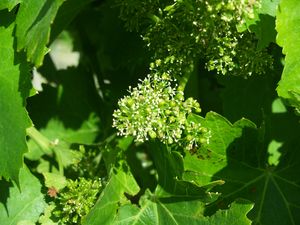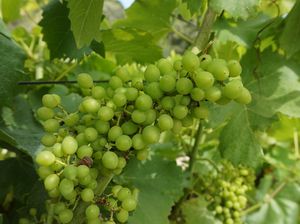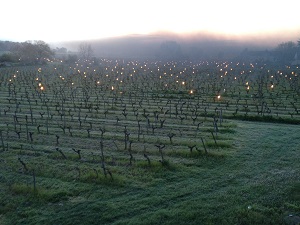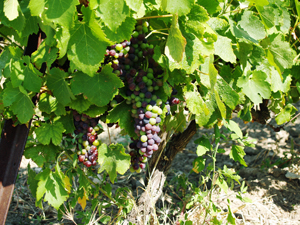2020 will be a year to remember for organic wine-makers in France! As everywhere else, the virus impacted the human activity in terms of working conditions and sales. The vines also had an unusual year, with exceptional climatic conditions.
In the autumn of 2019, the heavy rain that fell over much of France enabled the vineyards and water tables to build up their reserves. And thankfully so, because the vines would depend on this later on. A very mild winter, and mainly dry for the most part of France’s wine-growing regions, followed by a hot spring. At Domaine de la Guicharde in the Côtes du Rhône wine region, we saw roses in bloom in January!
As a result, the vegetative cycle started in January and February which is earlier than normal, and developed rapidly in springtime, giving the wine-makers some sleepless nights as they worried about late frosts that could be catastrophic for the young buds. At Château de la Bonnelière, in the Loire Valley, the large candles that are used to keep the frost at bay were set up in the vineyards, but fortunately not needed. Luckily, spring remained mild and warmer than usual, but by the end, we could sense that the vines were at risk from a lack of water.
The south and south west of France were the only regions to have any rain during spring. It wasn’t very heavy, but fell regularly, meaning that the organic wine-makers had to treat the vines more often to protect them from mildew, the fungus that thrives when the weather is both hot and wet. At Château Coutet in Saint-Emilion, at Domaine Allegria in the Languedoc, and at Domaine de la Guicharde in the Rhône Valley, the tractor could be seen often in the vineyards treating the vines as the copper and sulphur based sprays used in organic wine-making are contact products that protect the vines from the outside and don’t penetrate into the plant, and so they are washed away and need to be replaced after each rainfall.

The vines flowered early during the warm spring, appearing as early as the 19th May at Domaine Chapelle in Santenay, Burgundy, something which usually happens around the beginning of June. Fortunately it wasn’t too rainy, and the coulure was minimal for most of the vineyards, meaning that the flowers were for the most part able to fecundate and produce grapes normally. The end of spring and summer was extremely hot and that was when the lack of water began to be felt with the veraison being blocked, which is the moment when the grapes start to change colour. In some cases, the grapes were scorched by the hot sun, shrivelling and drying up.

As a result of the combination of all these factors, the grape harvest in France was on the whole very early. The wine-makers needed to harvest before the grapes became too concentrated in sugar, which would lead to wines that are too strong in alcohol, and before the grapes started to dry up, reducing the volume of wine that would be made. In Alsace, the vineyards around Wettolsheim and Eguisheim, including the vines at Domaine Stentz-Biecher benefited from some rain in August, allowing the grapes to finish maturing in the best conditions.
The first of our partner wineries to begin harvesting was Domaine Allegria in the south of France, who started on the 17th August. It’s not unusual to start harvesting in August in the Languedoc, but it’s very rare to do so in Burgundy! Domaine Chapelle in Santenay began on the 19th August, when they would normally do so in mid-September. In the Loire Valley, Château de la Bonnelière started in mid-September instead of in October.
The good news is that with the warm and dry weather, all of the wineries are in agreement that the quality of the grapes is excellent this year. No infections, good levels of maturity, and apart from a few dried out grapes, nothing to sort! For some wineries the harvest is a little smaller due to the summer drought which meant that the grapes were more concentrated, but the quality is very promising…
We’ll be following the next stages closely as all of the fermentations finish, the wines start the ageing process, and we get to taste them during the Vinification Experience Days next year!
If you’re interested in learning more about organic wine-making and want to get involved in next year’s grape
harvest, adopt some organic vines and come and work with the wine-maker at one of our partner wineries with the Gourmet Odyssey
Wine Experience.






